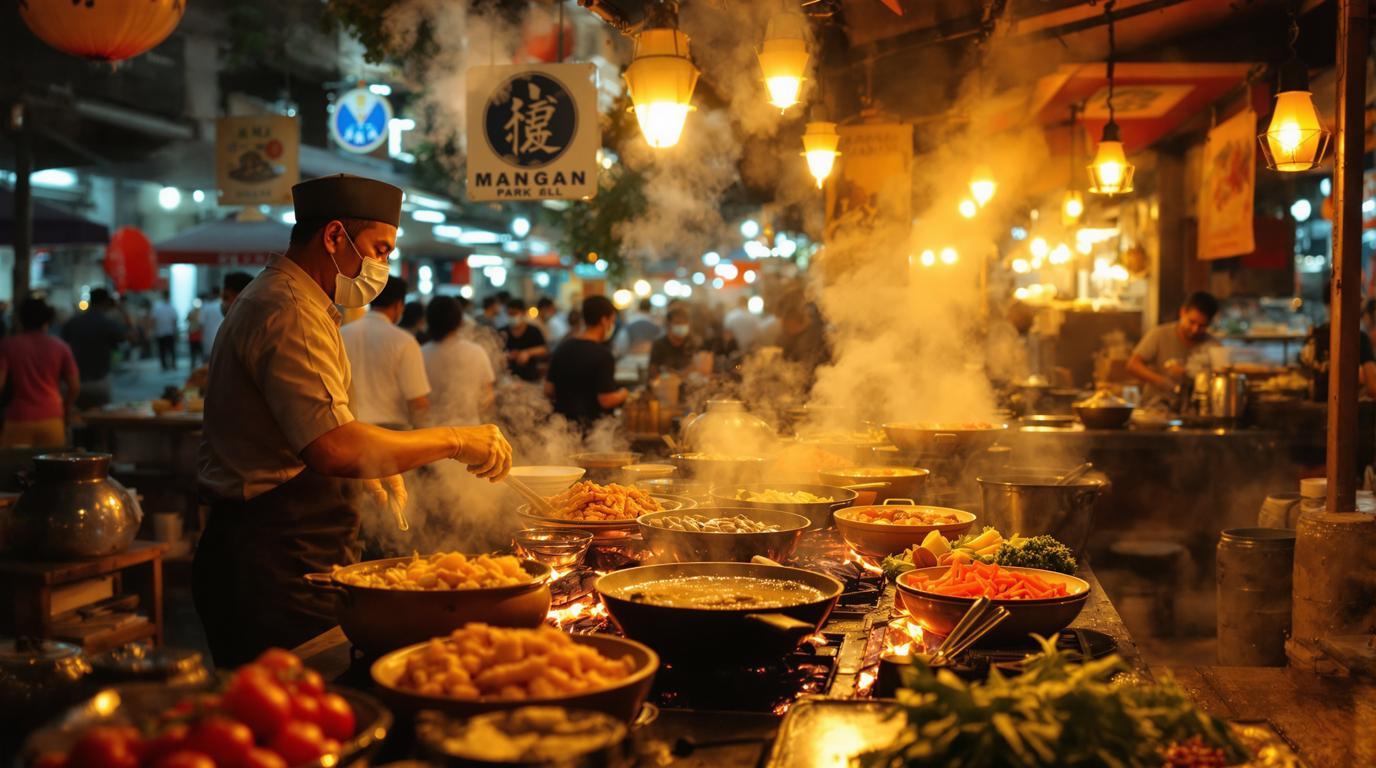Stepping into Jakarta feels like entering a symphony of contradictions. Indonesia’s capital city—home to over 10 million residents—buzzes with a chaotic energy that somehow finds harmony between gleaming skyscrapers and centuries-old traditions. While this Southeast Asian metropolis hasn’t officially received the Michelin treatment, its culinary landscape deserves just as much attention as its starred counterparts around the world.
A culinary tapestry woven through centuries
Jakarta’s food scene tells the story of Indonesia’s complex history. Chinese, Arabic, Indian, and Dutch influences have all left their mark, creating a gastronomic melting pot unlike anywhere else. From street-side warungs to upscale establishments, the city serves as a living museum of flavor.
“Our cooking techniques may be contemporary, but our souls remain tied to traditional Indonesian flavors,” explains Chef Hans Christian of August restaurant. “Jakarta’s culinary identity continues to evolve while honoring its roots.”
Where the elite meet to eat
Though Jakarta lacks an official Michelin Guide, several restaurants stand out for their exceptional cuisine. Plataran Menteng celebrates Indonesian heritage with dishes like Kerapu Bar Madura in a stunning traditional setting. Meanwhile, Apéritif Restaurant blends European techniques with local ingredients, creating a fine dining experience worthy of international acclaim.
August, recognized among Asia’s 50 Best Restaurants in 2023, offers modern tasting menus that highlight Indonesia’s diverse culinary traditions in a refined atmosphere. The experience rivals many Michelin-starred establishments in Europe’s food capitals.
Beyond the expected: Jakarta’s hidden gems
Venture beyond the well-known establishments to discover Jakarta’s culinary treasures. Higenaka provides an intimate izakaya experience with Japanese street food served in an atmospheric setting. Costa brings Catalan cuisine to life with Mediterranean flair and fresh ingredients that transport diners to Barcelona’s seaside.
A rising tide of innovation
Jakarta’s dining scene embraces global trends while maintaining its distinct identity. Plant-based dining options flourish alongside traditional meat-centric dishes. Zero-proof cocktails appear on menus across the city, catering to a growing interest in sophisticated non-alcoholic beverages.
“What makes Jakarta special is how we blend the old and new,” says local food critic Ajeng Wardhani. “Our chefs aren’t afraid to experiment with ancient recipes and modern techniques.”
Beyond the plate: cultural immersion
Like medieval cities with hidden architectural gems, Jakarta rewards curious travelers who explore beyond tourist hotspots. The Thousand Islands (Kepulauan Seribu) offer natural beauty rivaling pristine Caribbean destinations, while Jakarta Old Town reveals fascinating Dutch colonial architecture.
Navigating the concrete jungle
Jakarta’s notorious traffic requires strategic planning. Visit restaurants during off-peak hours and utilize ride-hailing services to navigate efficiently. Many high-end dining establishments offer spectacular views that transform the city’s sprawl into a magical urban tapestry.
The soul of street food
No culinary journey through Jakarta would be complete without sampling street food. Nasi goreng (fried rice) and gado-gado (vegetable salad with peanut sauce) reveal Indonesia’s true flavors in their most authentic form. These humble dishes often outshine their upscale counterparts in pure satisfaction.
A culinary palace worth the journey
Like magnificent French châteaux, Jakarta’s dining scene inspires awe while remaining relatively undiscovered by international food tourists. This oversight benefits travelers seeking authentic experiences without crowds.
Between desert and sea
Jakarta serves as the perfect gateway to Indonesia’s natural wonders. After indulging in the city’s culinary delights, consider extending your journey to nearby paradise-like destinations with turquoise waters.
Jakarta captivates not through Michelin stars but through genuine passion expressed on every plate. Each meal tells a story of cultural exchange, creativity, and tradition—a delicious narrative waiting for travelers willing to look beyond guidebook ratings and discover Indonesia’s culinary soul for themselves.
